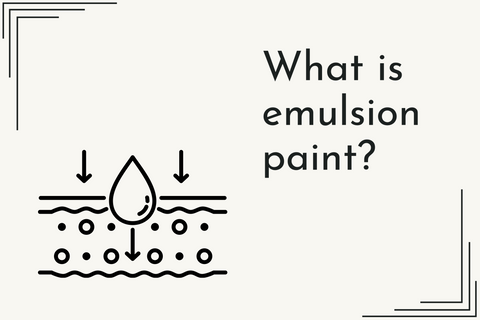If your home is crying out for a makeover, there’s no need to call in a professional decorator. A fresh coat of quality wall paint is all it takes to transform the look and feel of a room.
Painting walls, for beginners, is one of the cheapest and easiest DIY projects to undertake. Although it might seem daunting at first, any homeowner can do a great job with a little background research. Provided you prepare in advance and don’t rush, you’ll soon be painting like a pro.
In this guide, we’ll share 7 simple tips on how to paint a wall perfectly every time. We’ll walk you through the process step-by-step, including how to paint wall edges and corners. Let’s get started!
1. Choose the Perfect Wall Paint
One of the most important tips for painting walls successfully is to choose the right wall paint. The brand, colour and finish can all make a huge difference to the end result.
For most interior walls, we’d recommend using emulsion: a durable water-based paint. It’s easy to apply and comes in a range of finishes such as satin, eggshell and matt.
As for colour, that’s entirely up to you! Light shades make a room feel bright and airy, whereas dark or muted tones can exude a cosy or contemporary vibe. You may wish to try a few tester pots to see how your chosen colour looks on your wall.
2. Gather Your Tools
Next on our list of crucial ‘painting walls’ tips: gather your supplies and tools in advance. The last thing you want is to start painting and suddenly realise you’re missing something essential. Here’s what you’ll need:
- Soap and a soft cloth or sponge
- Primer (optional)
- Your chosen wall paint (enough for two coats)
- Masking tape
- 1-2” angled paintbrush
- Paint roller and sleeve
- Painting tray
- Dust sheet
- Stepladder or roller extension pole for hard-to-reach areas
If there are any holes in the wall, you’ll also need wall filler, a palette knife and sandpaper to create a smooth surface.
3. Prepare the Room for Painting
When learning how to paint walls, always make sure to prepare your space before you start. First, clear the room and lay down dust sheets to protect your flooring (and any remaining furniture). Ventilation is essential, so open all the windows. To be on the safe side, choose a paint that’s free from harmful emissions, such as Earthborn.
Next, clean the walls with wall cleaner or soapy water and a cloth or sponge. This will remove any dirt or grease that could prevent the paint from sticking. Fill in any cracks or holes, sanding down the filler afterwards.
Finally, use masking tape to protect any areas you don’t want to paint – e.g. skirting boards, the ceiling edge, door frames, sockets and switches.
4. Apply Your Primer
Before painting a wall, it’s often a good idea to apply wall primer. Primer paint acts as a base coat, covering any marks and patches of filler to create an even surface. It’s specially formulated to increase adhesion and durability, helping paint last longer without chipping. You can also prime a wall by diluting the first coat of paint with 10-20% water.
If you’re painting a white wall or newly plastered wall in good condition, one priming coat should suffice. However, if your wall is badly stained, or you’re painting over a dark colour, you might need two coats. Wait for the first layer to dry fully before applying the second.
5. Cut in the Edges
When your priming coat has completely dried, you’re ready to start painting! The first step is known as ‘cutting in’. This involves painting the edges of the wall, where it meets the ceiling, skirting boards, windows and door frames.
Learning how to paint a corner wall and ceiling line properly is the key to creating sharp, neat edges. Here’s how to do it:
- Start painting on a bright, sunny day when there is plenty of natural light
- Stir your wall paint thoroughly and pour it into your painting tray
- Load your angled paintbrush with paint, and remove any excess to give you more control
- Start a few inches away from the edge of the wall, working outwards
- Apply paint in gentle, even strokes – you can rest your hand on the wall to keep it steady
When you’ve finished, remove any masking tape while the paint is still wet. This will help prevent peeling.
6. Paint in a ‘W’ Shape
Now that the edges are taken care of, you can fill in the rest of the wall. So, let’s look at how to paint a wall with a roller.
First, coat your roller lightly with paint (using too much can cause drips). Work from the top of the wall to the bottom, applying the paint in a large ‘W’ shape. Then, go over the area again in an ‘M’ shape to fill in any gaps. When you’ve completed a 3ft x 3ft area, move on to the next.
Make sure each section overlaps slightly with the previous one, as well as the painted edges. Work quickly, while the previous section is still wet – this is called maintaining a ‘wet edge’. Otherwise, you’ll end up with unsightly lap marks.
7. Apply the Second Coat
If you want to paint a wall with a consistent, even finish, you’ll need to apply a second coat. But first, allow the first coat to dry completely.
Different types of wall paint will have different drying times, so check the can for guidance. Although emulsion paint is usually touch-dry in two hours, it’s best to wait 6-12 hours between coats. Adding the second coat too early could result in streaks, peeling or flaking.
Apply your second layer of paint in the same way as the first. Once you’re finished, leave the windows open to allow the wall to dry and ventilate the room.
Visit Greenshop Paints Today
If you’re planning a home painting project, head to Greenshop Paints today. Browse an enormous selection of natural and eco-friendly paints, primers and finishes from industry-leading brands such as Auro, Earthborn, Osmo and Treatex.
We’re proud to supply only the highest quality products made from plant-based materials – better for you, your home and the planet. We also carry a range of DIY accessories such as fillers, brushes, rollers and more.
You can browse our wall painting essentials here, or click here to request swatches of some of our most popular paints and finishes. For any questions or product recommendations, don’t hesitate to contact us.
Paint Colour Charts & Swatches
Please consider ordering one of our free paint charts for an accurate look at our ranges, or a very reasonably priced paint colour swatches which you can fix to the wall, and reuse as many times as you like in different rooms. You can also browse our extensive range of paint colours by shade.




